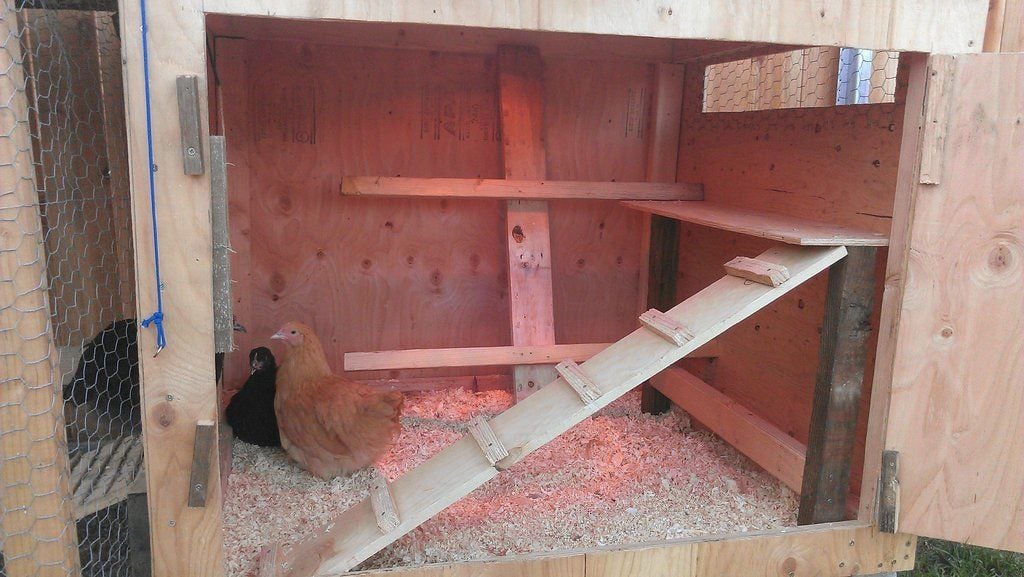- Mar 18, 2013
- 43
- 3
- 24
Hello everyone! I posted in the welcome thread and one of the first responses was that our chicken coop was too small, so now that our girls are getting bigger it's starting to bug me.
Our chicken run is now 17'x 3.5' which should be more than enough for six hens using the 8 square feet rule. That said, they mostly chill out in one 3x3 section together... we let them out between 6-7am and put them to bed after dusk. I just go close the door. They put themselves to bed.
The coop is 3x3. Seemed big at the time. Here is a picture of the coop and run together in it's current state:

Now, inside the coop:

So, I really don't want to have to build a new coop if I can avoid that. I also don't want to add on much, if any (besides external nesting boxes but the wife and I are still debating the details of that). How much did I mess up making it 3x3? Should I rip out the shelf and ladder to open it up? I originally made these the weekend we cut their wings and they were very off balance and I didnt think they could make it to the top roost. They seem to like it, and go straight for the shelf. Hardly ever on the roost... at least when I check it on them anyway. We're considering changing the roosts so they take up less space, are easier to get on, and getting rid of the shelf and ladder completely.
Thoughts? Thanks so much to anyone who answers!
Our chicken run is now 17'x 3.5' which should be more than enough for six hens using the 8 square feet rule. That said, they mostly chill out in one 3x3 section together... we let them out between 6-7am and put them to bed after dusk. I just go close the door. They put themselves to bed.
The coop is 3x3. Seemed big at the time. Here is a picture of the coop and run together in it's current state:
Now, inside the coop:
So, I really don't want to have to build a new coop if I can avoid that. I also don't want to add on much, if any (besides external nesting boxes but the wife and I are still debating the details of that). How much did I mess up making it 3x3? Should I rip out the shelf and ladder to open it up? I originally made these the weekend we cut their wings and they were very off balance and I didnt think they could make it to the top roost. They seem to like it, and go straight for the shelf. Hardly ever on the roost... at least when I check it on them anyway. We're considering changing the roosts so they take up less space, are easier to get on, and getting rid of the shelf and ladder completely.
Thoughts? Thanks so much to anyone who answers!



